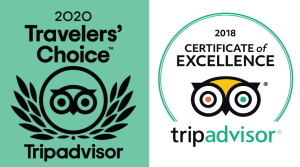Winemaking in the Driest Place on Earth. Vino del Desierto is a very interesting project, in a very extreme environment. The Atacama Desert receives just a few millimetres of rain per year, and many areas of this huge sandy desert located in both Chile and Peru have not seen rainfall for over 500 years. It seems a little crazy to try to produce good quality wine with such harsh terroir, but that is just what Arturo Prat University in Iquique has done.
Malka and I visited this unusual winery on our over 3100 km road trip from Santiago to Cusco. Thankfully we could break the journey in several wine regions along the way as 2400 km of sand gets quite monotonous!
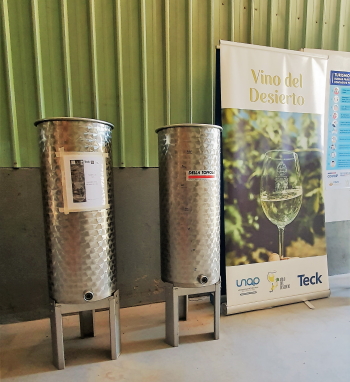
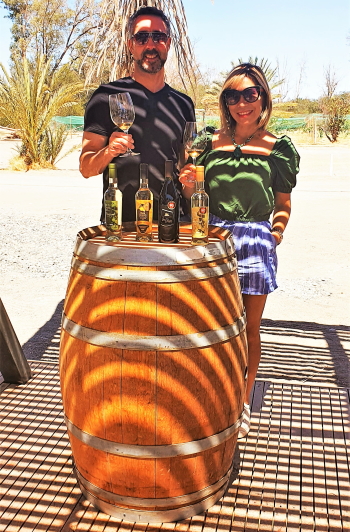


After driving 8 hours from Antofagasta we stayed overnight in the quaint little town of Pica which is literally in the middle of nowhere and on the road to God knows where! Pica is an oasis in the expanse of sand, known for its lemons and dinosaurs. The water for this region comes from aquifers, and without this well-water, there would be nothing living here at all. When I first looked at the possibility of visiting Vino del Desierto I imagined that the vineyards would be located in the oasis as the only green bit on Google Earth, but no, they are located around 30km from Pica in an even more arid zone.
After a couple of failed attempts trying to prearrange a visit, we decided to just turn up. What incredible luck, as we rolled up to the chained gate and resigned ourselves to the fact we were never getting in, some employees arrived, calls were made and we were welcomed in. Belen is the lady you can see in the photos showing us around, she is an agronomist for the project, but she is also a sommelier so knows what she is talking about when it comes to wine.

There has been winemaking in this area since the 1700s but when the city of Iquique was built in the 1940s water was diverted from agriculture and vines were abandoned. Then, in 2003, the Arturo Prat University decided to try to rescue some of the surviving vines which were over 100 years old, and create an experimental vineyard.
Investigation of vine DNA identified “Pais” as one of the varieties, which is to be expected as the Spaniards bought it here from the Canary Islands. But then a Georgian variety “Gros Colman” was identified, known as “Dodrelabi” in its original homeland where it is a table grape. The vineyard was once owned by a German family so several unusual vine species arrived with them. We haven’t tried Gros Colman yet, but we purchased a bottle so we will soon discover what it is like.
Yet further investigation discovered another white variety here, named Tamarugal. We are fairly certain you will have never heard of this grape as it was nearly extinct when the University rescued it and it has only ever grown in this area of Chile. So this is really the only true Chilean grape variety. Carmenere is well-known as the Chilean icon but actually has a short history when compared to Tamarugal. We did get the chance to try this white wine at the winery and it didn’t disappoint with some citrus, some ripe stone fruit, slightly herbaceous notes and tangy saltiness. We will be trying it again when we open our Gros Colman to enjoy an Atacama wine evening!


So back to the visit. We walked the varietal garden with Belen, the productive vineyards currently in use and saw some new parcels being prepared, the production area was inspected and lastly, we enjoyed a tasting. As you might expect from an educational institution it seems nothing had been overlooked and plenty of investment in modern equipment was in evidence.
The production area was very well equipped with modern equipment such as a de-stemmer, small bladder press which you see above and various sizes of stainless tanks to give them flexibility in vinification. Bottling and labelling machines were in evidence too, everything on a boutique scale but perfect for the purpose and obviously being used well judging by the quality of the wine.
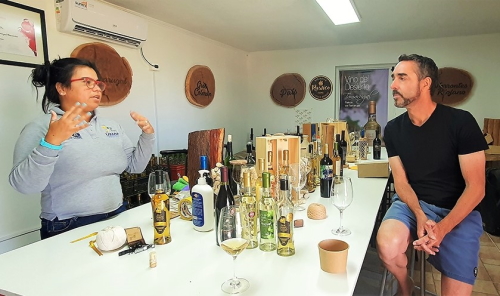
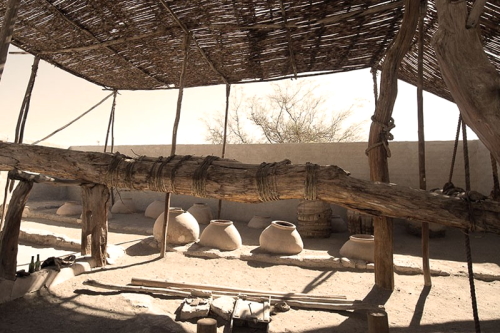
I must admit to being surprised at the level of equipment, expertise and quality of the wine. At the 2020 Catador Wine Awards in Santiago de Chile, which blind tasted 950 wines from 14 countries, the Tamarugal was awarded a gold medal. I was also surprised at the price, but then again it is a limited production, in very harsh conditions, in the middle of nowhere!
This is not a wine tour that can be easily added to a regular wine destination such as Casablanca or Colchagua, as it requires a special effort (and cost of course). We would need to fly you to Iquique and drive some 90 minutes from there. But if you have the time and are a wine nut like us then it is well worth doing. Plus you can visit the lovely little village of Matilla, home to a 17th Century wine press, stone lagar and clay amphorae and you can take some silly photos with Dinosaurs as we did. What a great day out!

